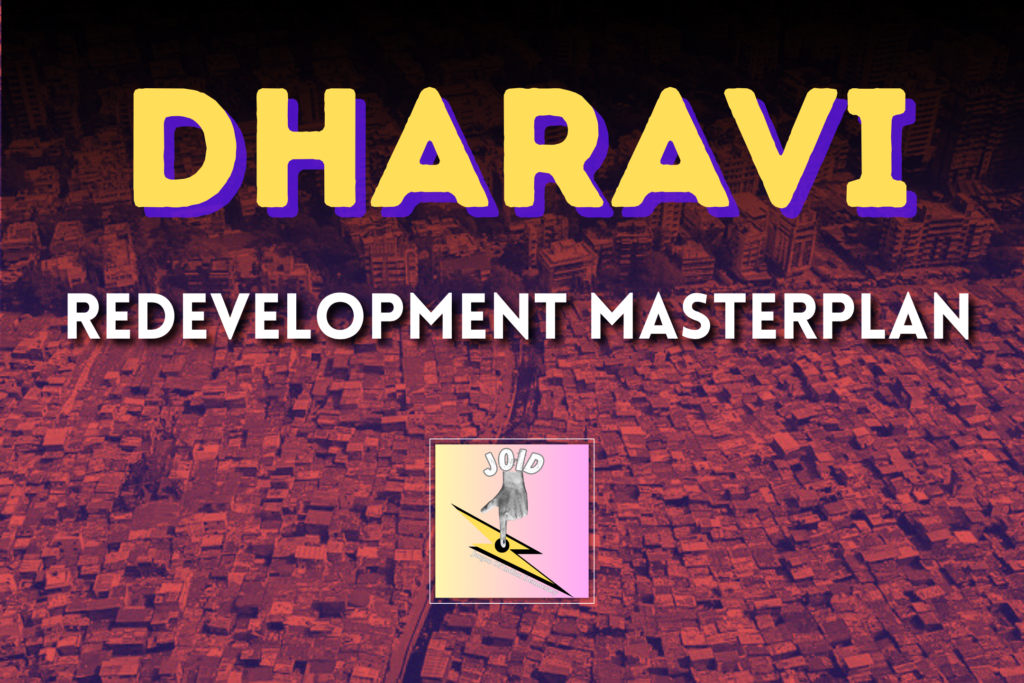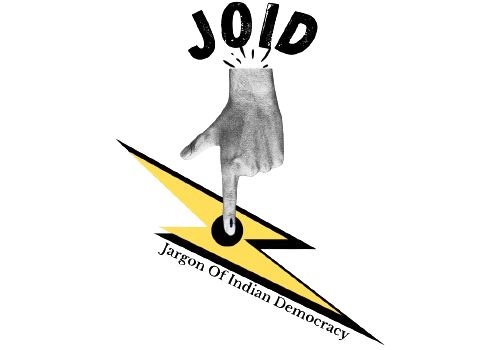
When jetliners skim the skyline of Mumbai, passengers often glimpse a sprawling patchwork of tin roofs – Dharavi. Dharavi spans over 620 acre land, to the casual eye it is a symbol of poverty and crowded slums. Yet scratch beneath its surface and Dharavi reveals something astonishing: a humming, self-sustaining micro-city. Within its tangled lanes, almost a million Mumbaikars have built an entrepreneurial paradise of shoe-makers, textile traders, recyclers, potters and more. It is not mere squalor, but a vivid mosaic of enterprise. With thousands of tiny factories and workshops tucked into every alley, Dharavi is in fact a billion-dollar informal economy – arguably the most vibrant chunk of the city. What this slum lacks in plush malls and highways it more than makes up for with grit, resourcefulness and a unique circular-economy spirit (Mumbai produces nearly 6,500 tonnes of plastic waste and Dharavi solely recycles as much as 80% of Mumbai’s plastic waste ). The redevelopment project now underway recognizes this spirit, aiming not to bulldoze the community out of existence, but to nurture it like a phoenix rising from its own ashes.
The vision behind the redevelopment is both grand and humane. At its core is a “live-work” model that mixes up homes and livelihoods. Imagine modern apartment blocks where a cobbler’s workshop or designer’s storefront sits at the doorstep, and a potter’s kiln glows just a few flights up. Generations of artisans in Dharavi have lived above or beside their shanty businesses, and today’s plan preserves that pattern. Qualified families will move only a few meters into new flats – a one-time step into safety – as their new homes literally grow under their eyes. These apartments, about 350 square feet each with separate kitchen and bath, are more spacious than the cramped shacks they replace, and come with the basics that were missing: running water, reliable electricity, sanitation drains and secure walls. Around these buildings the city planners will weave in parks, playgrounds, schools and clinics so that daily life comes with dignity. The bottom line is that people don’t get uprooted; their streets and workplaces are reborn around them. This is the opposite of harsh eviction: it is inclusive, participatory resettlement.
A second core element is transit integration. Historically, Dharavi has been isolated on the city map, a cul-de-sac of dreams without fast connections. That ends now. The plan calls for making Dharavi a major mobility hub. Already Mumbai’s new Metro rail is being extended directly into the area, creating an interchange where north-south and east-west lines meet. Within the next few years a multi-level metro station will rise – the first of its kind here – linking Dharavi to every part of Mumbai in minutes. No longer will workers spend hours in chai vendors’ queues just to cross town. Feeder buses and clear sidewalks will connect each block to the transit nodes. Integrating transit has another benefit: it will dramatically cut traffic on the narrow Dharavi streets, turning them from congested traffic traps into cleaner, pedestrian-friendly boulevards. In short, Dharavi will not be pushed to the city’s fringes – it will become part of Mumbai’s circulatory system.
Interwoven with the transit plan is a radical street redesign. Today Dharavi’s maze of mud lanes and encroached paths allows only main roads to bear the brunt of all traffic. The new design discards this chaos in favor of a high-density grid. Every 100–125 meters there will be a new road, 9–12 meters wide, threading through the community. These won’t just be widened crawlspaces; they are being built as “complete streets” for all users. Wide sidewalks and bike lanes will be carved out of existing slum plots, and every street will have space for a local shopfront or vegetable stall. Trees and public seating will border these lanes, turning them into open-air living rooms. The point is both practical and poetic: frequent cross-streets allow natural light, dispersing crowds, and let business owners reach more customers easily. Dharavi’s economic arteries will suddenly have arteries of pavement to carry life. Urban planners note this grid will “catalyze economic uplift,” because when a hardware store or dye shop is easy to reach, business booms. Above all, the redesign sends a message: Dharavi is a connected neighborhood, not an outcast island, and its people deserve clean, safe, walkable streets just like anywhere else.
Central to the plan’s promise is preserving – indeed strengthening – Dharavi’s legendary livelihoods. The neighborhoods are no stranger to enterprise: leather tanneries there export goods across continents, many homes are also metal workshops, garment units or potteries. The redevelopment explicitly protects these trades. Under the old scheme, residents feared losing their living when their shacks were razed; now the rhetoric is about “rehousing the entire business fabric.” For example, clusters of artisans will be assigned new workshop spaces in the first phases of construction. Dealers in scrap metal and plastic will have modern recycling units built in adjacent commercial blocks. Gone will be illegal open-streets markets; in their place will be organized plazas and common facility centers where digital commerce desks and co-op tool workshops support small entrepreneurs. Young villagers training as plumbers or IT workers will find community training hubs to sharpen skills. Even more ambitiously, developers talk of building marketplaces linked to India’s Open Network for Digital Commerce, so a potter in Dharavi can sell wares nationwide. Women-led microbusinesses, which form the backbone of local cottage industries. In short, the plan goes to pains to be more than walls and roads; it intends to uplift careers and economies. This approach acknowledges a simple truth: you cannot transform Dharavi by hollowing out its jobs. Instead, the project treats livelihood as sacred.
Driving this complex endeavor is the Adani Group, India’s largest infrastructure conglomerate. Gautam Adani’s involvement has drawn global attention, and for good reason. Here is a private corporation committing at least $3 billion and decades of effort to a slum makeover – an unusual but welcome model of socially conscious capitalism. Over the past year Adani’s team has worked openly with Mumbai’s government and with urban experts from Sasaki ( Link A US based interdisciplinary design firm ) , Buro Happold ( Link An international consultancy firm working ont he master planning for the Dharavi Redevelopment ) and Hafeez Contractor ( Link Renowned and experienced social housing and slum rehabilitation firm) to forge a blueprint. This hybrid of Indian will and international experience is precisely what a challenge of this magnitude needs. Adani was famously willing to bid 2.5 times the next rival to secure Dharavi’s redevelopment rights, signaling that he sees this not as a charity project, but as a strategic investment in India’s future cities. In speeches he has evoked the “humbling spirit” and “equanimity” of Dharavi’s people and declared that building a better Dharavi is about “restoring dignity” as much as about houses or shops. Whether one focuses on his awe-inspiring rose-tinted view or on his track record of delivering infrastructure, there’s little doubt his participation adds firepower to the endeavor. It aligns corporate ambition with social good: Adani gains the role of nation-builder as much as developer, and Dharavi’s million residents gain a partner who has both capital and resolve.
Viewed globally, this Dharavi venture reads like a new playbook for inclusive urban renewal. Around the world, policymakers watch Mumbai. Slums and informal settlements are skyrocketing in cities from Lagos to Bangkok; traditionally many governments have feared slum reform would trample poor communities. Dharavi’s plan breaks that mold by treating residents as stakeholders, not hurdles. Indeed, some compare the vision to Singapore’s famous 1960s housing drive, within two years Singapore HDB built 21000 dwelling units , which lifted millions into public homes without destroying their communities, or to Latin American integration projects where favelas have been physically connected to city centers. If Dharavi succeeds – by providing modernity without expelling the people – it will be a proof point that urban growth need not deepen inequality. Already international bodies emphasize sustainable, people-centric development (think UN Sustainable Development Goal 11 on inclusive cities). Dharavi could be Exhibit A. Moreover, climate advocates note that upgrading one of the city’s densest neighborhoods will dramatically reduce pollution (through better sanitation and the new metro) and improve energy usage. In a sense, Gautam Adani’s slum project resonates with a new global trend: companies and investors taking part in social infrastructure, from affordable housing to green cities.
Dharavi’s redemption story is far from assured – there are plenty of hurdles yet. But the blueprint on the table has promise. For Mumbai and indeed for much of the developing world, the lessons could be profound: that a slum can be not just cleared but transformed into a thriving, green, inclusive community, without sacrificing its soul or its small businesses. This is what the Adani group and its partners aspire to demonstrate. If the plan materializes – if the narrow alleys give way to sunlit avenues and the open drains give way to schools and clinics – Dharavi will emerge not as a bankrupt “ghetto” in need of charity, but as a testament to what responsible capitalism can achieve. In the heart of India’s financial capital, amid those corrugated rooftops, may rise a model city. And perhaps then, decades from now, we will not remember Dharavi for its poverty. Instead we might recall it as the city that gave the world a blueprint: how to marry enterprise and empathy in the 21st-century metropolis.
Our other articles : India United – India’s message is loud & clear on terrorism a diplomatic strike on terror| The Indian Stock Market is bleeding | SUPER NARI – 25 | Caste and the Ballot in Bihar | The suicidal mission of Pakistan’s so called ‘Establishment’ | Bengal Bellwether | Who is Responsible for Bihar’s Migration Crisis? | Why Congress must go solo in Bihar | Jai Bhim | Old is Gold , Resurrection of ‘Dynasty Politics’ | China Faces 125% Tariff by USA: A Strategic Opportunity for India | When the Accuser Becomes the Accused
